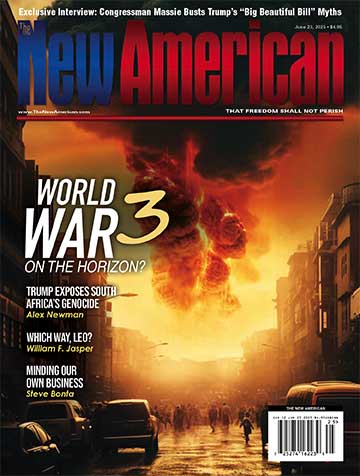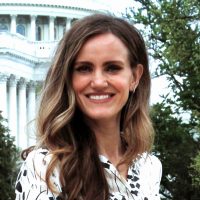
Last Wednesday, Representative Paul Gosar (R-Ariz.) introduced H.R. 9828, the “End the Vaccine Carveout Act,” which aims to remove the legal protections that currently shield vaccine manufacturers from liability for vaccine-related injuries. According to the press release on the matter, the “unjust liability shields” enjoyed by vaccine manufacturers “resulted in hundreds of billions of dollars in profits for Big Pharma while leaving tens of thousands of people without the ability to seek legal justice and compensation for injuries caused by vaccines.”
The proposed legislation has already garnered significant support, with 30 congressmen co-sponsoring the bill. This marks a strong push toward reevaluating pharmaceutical accountability in the United States.
The 1986 National Childhood Vaccine Injury Act
Gosar’s bill centers on the National Childhood Vaccine Injury Act (NVCIA) of 1986, which provided vaccine manufacturers with broad legal immunity from lawsuits related to vaccine injuries. This law emerged as a response to a wave of litigation, particularly involving the DPT (diphtheria, pertussis, and tetanus) vaccine. At the time, these lawsuits threatened the stability of the vaccine supply as manufacturers faced increasing financial and legal risks. The makers then began lobbying Congress for legal protections. The legislators came up with the NVCIA. The act ostensibly aims to protect manufacturers while establishing an “alternative remedy to judicial action” for managing vaccine injury claims.
The Act covers vaccines that are part of the CDC’s ever-expanding childhood vaccination schedule. It also covers certain adult vaccines, such as seasonal influenza vaccine.
The National Vaccine Injury Compensation Program
In place of direct lawsuits against vaccine manufacturers, the Act created the National Vaccine Injury Compensation Program (NVICP). This system established a no-fault process for resolving vaccine injury claims. Instead of going through the traditional court system, individuals alleging vaccine injuries could file claims through this specialized government program.
The NVICP operates under the jurisdiction of the U.S. Court of Federal Claims, often referred to as the “vaccine court.” This court reviews each case to determine if the vaccine likely caused the injury. The program is unique because it removes the need to prove manufacturer negligence, a key aspect of traditional lawsuits. Instead, claimants must demonstrate that their injury fits specific criteria outlined by the Vaccine Injury Table. The table contains known side effects associated with vaccines.
For injuries not included on the Vaccine Injury Table, the process becomes more challenging. In these cases, the claimant must present compelling medical and scientific evidence to prove that the vaccine directly caused the injury. This step often involves complex and expensive expert testimonies, making the process more burdensome.
If the special master rules in favor of the claimant, compensation is provided through a federal fund specifically set up for the NVICP. This fund, supported by a tax on vaccines, can cover medical expenses, lost income, and compensation for pain and suffering.
Victims Footing the Bill
Outrageously, the vaccine tax that funds the NVICP is ultimately passed on to the very individuals who might be injured by vaccines. Healthcare providers pay the tax upfront, but shift the cost to patients or their insurance. This places the financial burden on those receiving vaccines rather than on pharmaceutical companies.
Even worse, public health programs such as the Vaccines for Children Program (VFC), designed to help underinsured or uninsured children, also participate in this system. These programs purchase vaccines in bulk, but the costs — tax included — are still borne by the public, meaning that even low-income families contribute to the compensation fund meant to address vaccine injuries.
Critics argue that this practice is fundamentally flawed. Individuals who suffer vaccine-related injuries are essentially footing the bill for their own potential compensation. This raises serious questions about fairness, as victims of vaccine injuries are not only facing the health consequences. They also indirectly pay into the system that is supposed to compensate them.
Challenges and Criticisms
Although the NVICP was created to simplify compensation and protect vaccine production, it has faced criticism for its effectiveness. Critics argue that for injuries not on the Vaccine Injury Table, the burden of proof is excessively high, making it difficult for claimants to succeed. Non-profit organization Children’s Health Defense reports that as of 2019, only 31 percent of all petitioners, or 6,276 people, have received compensation through the NVICP.
Unlike standard injury claims, plaintiffs must show significant evidence of wrongdoing, such as withheld safety information or negligence on the part of vaccine manufacturers. Critics claim this high threshold tilts the system in favor of pharmaceutical companies.
Moreover, the compensation process itself has been criticized for being slow and bureaucratic, with some cases taking years to resolve. The complexity of proving vaccine injuries often discourages individuals from filing claims. The combination of legal and medical challenges can overwhelm victims and their families, leaving them without proper recourse.
Vaccine Safety and Conflicts of Interest
One of the primary issues raised in Congressman Gosar’s statement is the conflict of interest within the regulatory agencies that approve vaccines. The Centers for Disease Control and Prevention (CDC) and the National Institutes of Health (NIH) have faced scrutiny over their ties with pharmaceutical companies. Says Gosar,
Government bureaucrats and scientists responsible for approving vaccines are in bed with Big Pharma, often owning pharmaceutical stocks, serving as consultants and receiving lucrative contracts from pharmaceutical companies that pressure them to produce favorable results which is in direct violation of federal law.
Worse, many scientists and researchers in government agencies develop patents for vaccines that are approved by the very agencies they work for, creating a conflict of interest and raising serious questions about the impartiality of their decisions.
While Gosar raises serious concerns about conflicts of interest between government regulators and pharmaceutical companies, he does not offer specific solutions to address these issues. The best possible remedy would be elimination of the unconstitutional federal healthcare regulators and decentralization of healthcare. Since this is unlikely to happen in the near future, there are other possible solutions. Those include stricter financial disclosure requirements, mandatory divestment from pharmaceutical stocks for officials involved in approvals, and a ban on consulting relationships with the industry. Implementing regular audits and post-government employment restrictions could further safeguard against undue influence in the vaccine approval process.
Support and Co-sponsorship
The proposed legislation has gained the support of 30 co-sponsors. These include Representatives Andy Biggs (R-Ariz.), Lauren Boebert (R-Colo.), Matt Gaetz (R-Fla.), and Marjorie Taylor Greene (R-Ga.). Advocacy groups such as Children’s Health Defense and the American Family Project also back the bill. They argue that removing the liability shield will push pharmaceutical companies to prioritize safety over profit.
As the debate over H.R. 9828 moves forward, it directly challenges long-held beliefs about vaccine safety and corporate accountability. It also raises questions about the government’s role in public health regulation. The bill questions whether the current system properly holds pharmaceutical companies accountable for vaccine-related injuries. At the same time, it sparks a broader conversation about transparency and fairness in how vaccines are approved and regulated.





